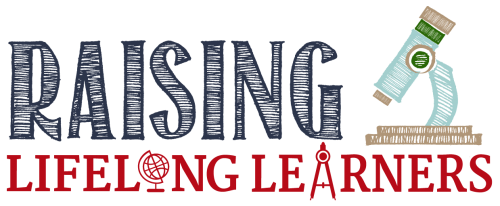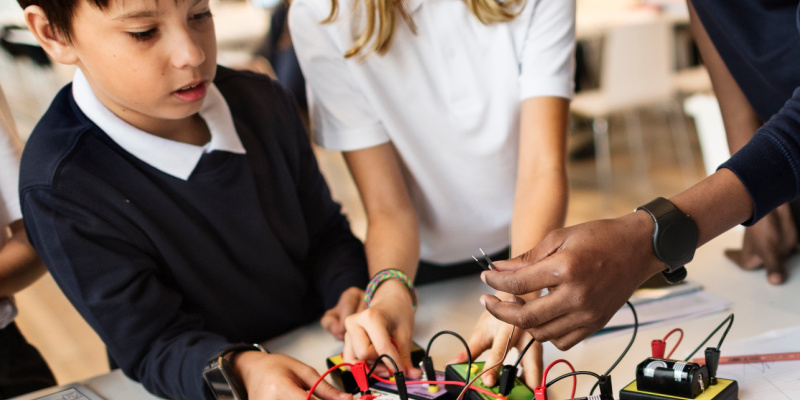Create a Multimodal Learning Environment
Homeschooling neurodivergent kids is the absolute best thing educationally you can do for them.
You love them more than anybody else and will move mountains to get them what they need. You’ll be very conscious of meeting them exactly where they are and moving them forward. Multimodal learning will help you do just that. It incorporates various styles, senses, and strategies in what you do. The multimodal learning concept has so many potential benefits for your neurodivergent kiddos that it’s empowering.
First, let’s talk about kids who are wired differently in any way. They could have any number of challenges, and it’s important to note that all these things are manageable in a homeschool. You might have a kiddo with autism, ADHD, dyslexia, dysgraphia, dyscalculia, or a combination of these. Multimodal learning will incorporate different learning styles to support these differences.
Most kids have a preference and natural understanding in one of the learning styles. This could be reading and writing, auditory, kinesthetic, or visual. That doesn’t mean you want to do all your teaching in their learning style. They’re neurodivergent, and you want to ensure they learn well in all areas.
When you are working with your child on a subject they struggle with, pull in their best learning style to help them develop an understanding of the subject. Then use their least preferred learning styles in the areas where their strengths shine so they become more well-rounded.
Multimodal Approach to Learning
It’s important to tap into many different learning modes for neurodivergent kiddos.
Think about incorporating visual cues, pictures, music, lectures, videos, books, plays, or experimentation. Giving your neurodivergent kids the opportunities to engage multiple senses and learning styles allows them to succeed.
And here’s the best part of this. It gives them more buy-in. It’s more enjoyable for them to learn in this way. They will follow along with the learning more than they would if we weren’t incorporating all these different modalities.
Graphic organizers are a great resource for incorporating visual queuing systems in your homeschool.
Videos will tap into the visual and auditory cues.
Create a playlist on Curiosity Stream or YouTube; add documentaries you find online for your current topics. The videos help to strengthen concepts that have been challenging to grasp with hands-on activities or to challenge your kids in areas they may be excelling in through books and writing.
For kids who are very kinesthetic or have some sensory challenges that cause them to seek input, you can use a lot of physical, movement-based learning. They can run laps or do jumping jacks while they learn. They can use sensory bends or build LEGOs while listening to a read-aloud. These are all examples of using multiple modalities to enrich their learning.
Your Learning Environment
As you personalize your lessons, remember to do the same with your learning environment. Look for ways to include different modalities. When your kids need music, make sure you have some music player. When your kids need quiet places to go, have those as well.
If you have a kiddo who struggles with writing, create a space to support modifications for them. Have a place where you can talk about what they’ve learned. Set up a shelf with a notebook and various art supplies where they can illustrate new or interesting ideas and concepts instead of writing an essay.
Find ways to incorporate the different modes of learning into your homeschool, while remembering to keep your child centered at the core of it.
You have the ability to change things up to meet the needs of your kids at any given point so you don’t overwhelm them with too much of one thing. You also want to bring them into the decision-making because your kids learn best when they have buy-in.
Build the perfect homeschool around who they are and who they’re meant to be.
Raising Lifelong Learners Episode #205: Create a Multimodal Learning Environment
The concept of multimodal learning has so many potential benefits for neurodivergent kiddos that it’s empowering, really. Multimodal learning means using a variety of different styles, a variety of different senses, and a variety of different strategies in what you do. In today’s episode, Colleen explores what that looks like in your homeschool.
Links and Resources from Today’s Show:
-
- SPONSOR: CTC MATH
- The Learner’s Lab, a Raising Lifelong Learners community!
- Curiosity Stream
- RLL #141: Taking an Eclectic Approach to Homeschooling Your Gifted Child
- Let’s Talk About Your Gifted Kids’ Learning Styles
- RLL #67: Ideas for Nurturing Our Kids’ Strengths
- Cultivating a Learning Rich Environment
- Giving Your Child Life Skills | Metacognition
- RLL #119: The Best Advice I Can Give You: Become a Student of Your Child
- RLL #194: Motivating Your Struggling Learner
Leave a Rating or Review
Doing so helps me get the word out about the podcast. iTunes bases their search results on positive ratings, so it really does help — and it’s easy!
-
- Click THIS link to go to the podcast main page.
- Click on View in iTunes under the podcast cover artwork.
- Once your iTunes has launched and you are on the podcast page, click on Ratings and Review under the podcast name. There you can leave either or both! Thanks so much.
Want to record your own question, comment, or have your kids tell us what they LOVE to learn about? Click below and start recording!



